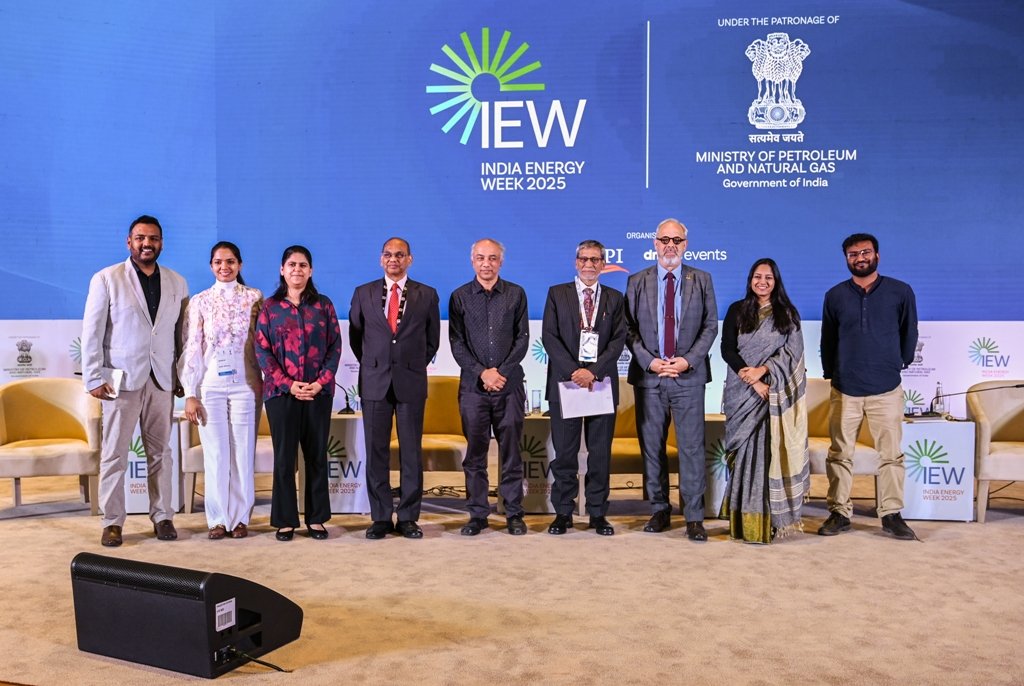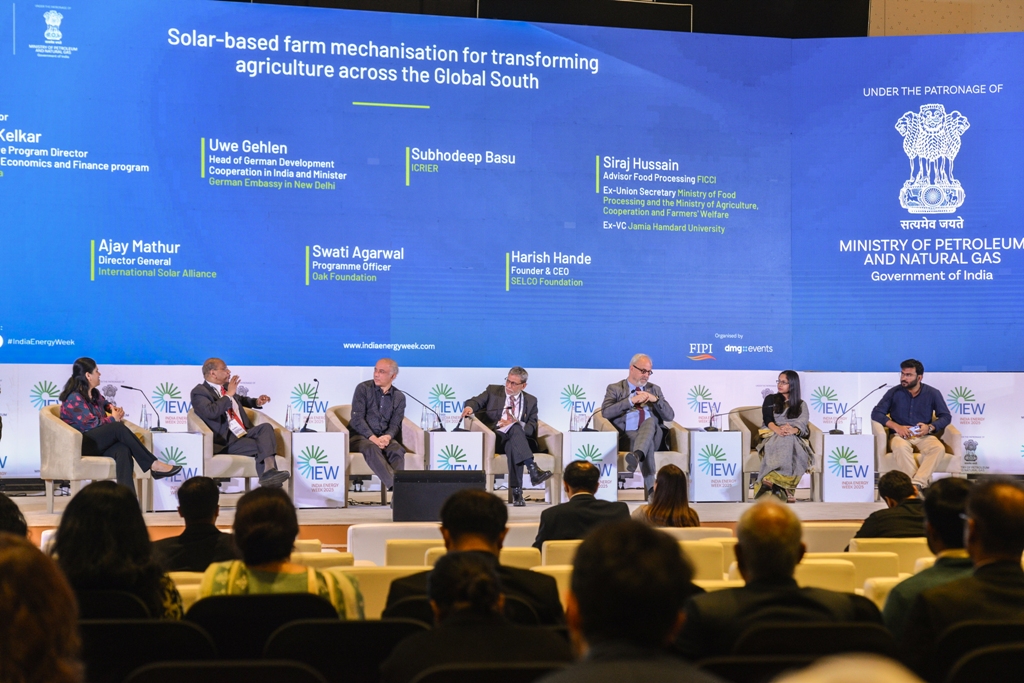India Energy Week 2025 saw pivotal discussions that focused on both renewable energy solutions for agriculture and the exploration of hydrocarbon resources, reflecting the country’s diverse approach to energy and sustainability.

One of the sessions, titled “Solar-Based Farm Mechanisation for Transforming Agriculture Across the Global South”, brought together experts from various sectors to explore the potential of solar energy in revolutionising agriculture.
On the second day, the Directorate General of Hydrocarbons (DGH) provided a detailed overview of the Open Acreage Licensing Policy (OALP) Bid Round X, signalling India’s commitment to expanding its hydrocarbon exploration efforts.
Solar-based farm mechanisation: A game changer for agriculture
The panel session on solar-based farm mechanisation highlighted how solar energy could enhance agricultural productivity, reduce operational costs, and foster greater integration between food and energy security.
Ajay Mathur, Director General of the International Solar Alliance, pointed out the pressing need for innovative, cost-effective solutions to meet the growing demand for cereals.
He discussed key solar-based technologies such as solar pumps, solar cold storage, Agri-PV systems (which combine agriculture and solar power generation on the same land), and electric tractors. These technologies are poised to make a significant impact on agriculture, especially in the Global South.
Mathur stressed that while these technologies are available, the financing models need to evolve to unlock their full potential. He called for asset-based financing and guarantee mechanisms to attract global investors, ensuring that farmers can access the benefits of these innovations.

Harish Hande, Founder & CEO of SELCO Foundation, proposed a long-term asset-based financing model to reduce the reliance on operational expenditure financing. He cited Meghalaya’s capital loan model for women turmeric farmers as a successful example that could be replicated across India.
Siraj Hussain, representing FICCI, highlighted India’s progress in solar-powered farm mechanisation, including the distribution of 400,000 solar pumps under the KUSUM scheme and government-approved subsidies for solar cold storage under the Mission for Integrated Development of Horticulture (MIDH).
However, Swati Agarwal from the OAK Foundation stressed the importance of policy frameworks that support local workforces and align crop selection with solar energy needs. She advocated for a balance between capacity building and crop patterns to instill confidence in farmers before introducing new crops and energy technologies.
Subhodeep Basu of ICRIER called for a more farmer-centric approach to policy design and research, emphasizing the need for greater consultation with stakeholders. He also underscored the importance of studying the impact of solar energy on crop productivity and suggested learning from global examples, such as Japan’s soil norms and land use standards, to develop India-specific Agri-PV policies.
DGH’s Insights into hydrocarbon exploration
On Wednesday, February 12, the Directorate General of Hydrocarbons (DGH) hosted a session detailing the blocks available in the Open Acreage Licensing Policy (OALP) Bid Round X. This round represents the largest acreage ever offered under a single OALP round, covering a total area of approximately 191,986.21 square kilometers.
The DGH’s presentation, led by Dr. Kaustav Nag and Vinod Seshan, showcased 25 blocks spread across 13 sedimentary basins. These blocks include a mix of ultra-deepwater, deepwater, shallow-water, and onland areas, with categories based on their geological and resource potential.
The blocks range from those currently under commercial exploitation to unexplored areas that are yet to be discovered.
In addition to the DGH’s presentation, experts from the University of Houston, Beicip-Franlab, and Halliburton provided technical analyses of the blocks, including Sediment Thickness Maps, Basement Time Maps, and Seismo-Geological Sections.
These analyses offered valuable insights into the hydrocarbon potential of the proposed blocks, helping investors make informed decisions about exploration and production opportunities.
The session also highlighted the key regulatory changes proposed under the Oilfields (Regulation & Development) Act, which aims to make exploration and production more attractive to investors.
Furthermore, Akash Goyal from DGH introduced NDR 2.0, an upgraded version of the National Data Repository. NDR 2.0 offers enhanced interoperability and allows investors to download data automatically, streamlining the decision-making process.


